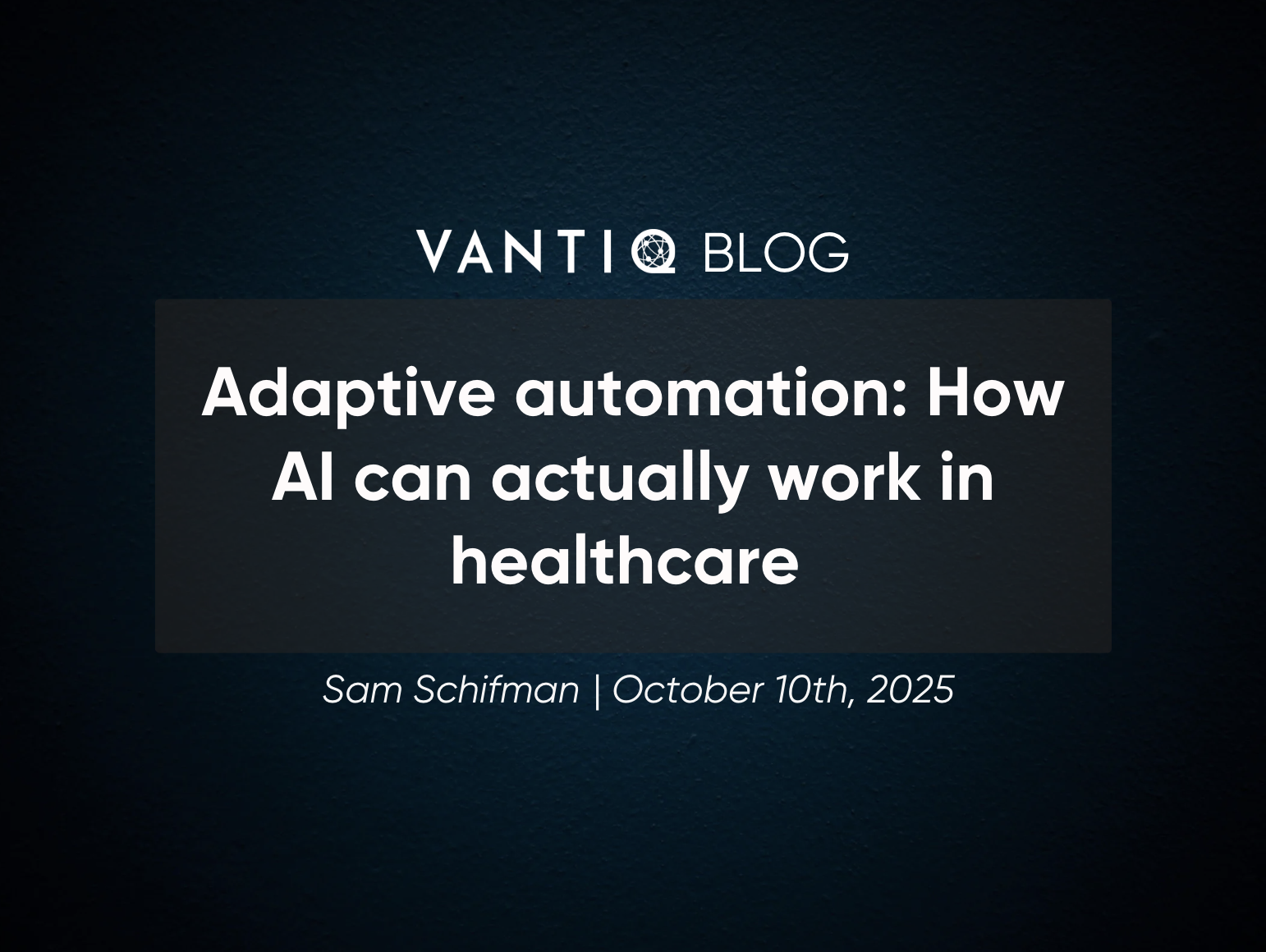Posted by Sam Schifman, Innovation Architect, Vantiq – 08 October 2025
AI is dominating healthcare conversations, yet MIT reports that 95% of generative AI initiatives fail to deliver results. Certainly, the technology is challenging, but it isn’t the tech that is holding us back. As with any new tech, it is understanding how to apply it that is the real barrier to adoption.
Traditional design methods don’t help. User-centric design assumes people know what they want, but with AI, people barely know what is possible. On the other hand, technology-first approaches often create solutions no one values. Add to this a tendency to attack the hardest problems first, and it’s clear why so many efforts stall before they scale.
Healthcare needs a different approach, one that helps envision new ways to drive operational efficiency and better outcomes utilizing AI.
Why traditional automation fails in healthcare
Traditional automation maps every process step in advance. This works for predictable tasks, but healthcare is rarely predictable. No two patients are identical, and no two cases follow exactly the same path. New information and environmental changes force the plan to shift continually. Rigid workflows crumble under this variability.
Healthcare operates more like jazz than classical music: structured improvisation rather than predetermined sequences.
How adaptive automation works in healthcare
Adaptive automation replaces rigid workflows with intelligent agents that understand goals, context, and available tools. These agents coordinate with each other and with people to plan, execute, and adjust in real time. They handle routine steps, flag exceptions, and request human approval when judgment is required.
The key difference: instead of breaking under exceptions, the system adapts.
Example: Hospital discharge process
On paper, discharge looks straightforward: find a rehab bed, reconcile medications, get sign-offs, run labs, provide instructions. In reality:
The complexity:
-
Patient A needs rehab with a complex checklist of steps
-
Patient B goes home with a completely different pathway
-
A specialist adds requirements like a home heart monitor
-
An abnormal lab result can send the entire plan sideways
How adaptive automation responds:
-
A scheduling agent lines up consults in the right order
-
A logistics agent arranges equipment when needed
-
A lab agent monitors labs and suggests changes to the process if results are abnormal
-
The case manager reviews and approves each step before it moves forward
The workflow flexes to each patient while keeping clinicians in control. Instead of fighting exceptions, the system embraces them.
Why healthcare AI can work now
For decades, computing chased determinism: same input, same output. Healthcare doesn’t work that way.
Today’s AI models are non-deterministic but biased toward useful outputs. Combined with modern, event-driven platforms that are resilient, elastic, and message-based, we finally have the infrastructure to implement adaptive automation reliably at scale.
See it in action
In my recent webinar “The Future of Healthcare Automation,” I demonstrate how adaptive automation tackles healthcare’s everyday complexity. You’ll see agents coordinate work for clinicians, reducing clerical burden and driving to better outcomes, all while keeping the clinician in the driver’s seat.
For a practical view of where this technology fits today and how it can drive measurable results in real operations, [watch the full webinar here].

























































